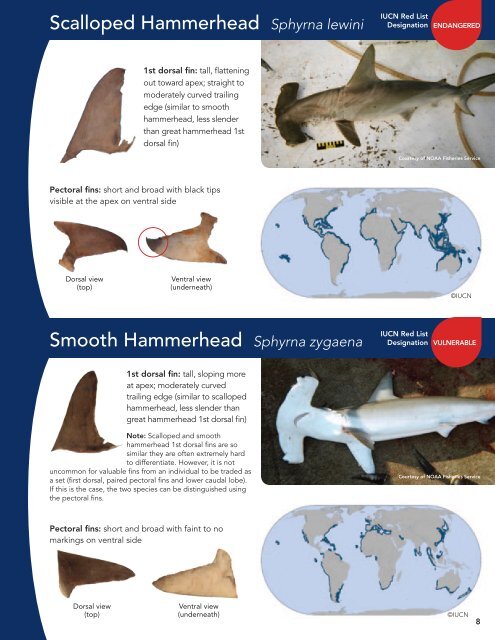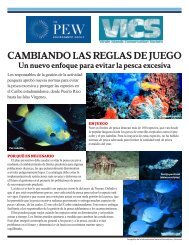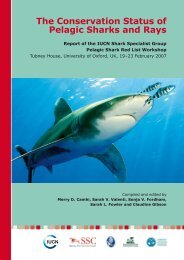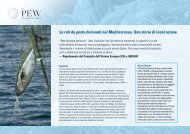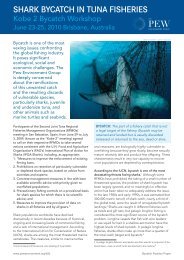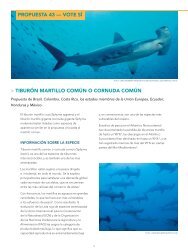Shark Fin ID Guide - Pew Environment Group
Shark Fin ID Guide - Pew Environment Group
Shark Fin ID Guide - Pew Environment Group
You also want an ePaper? Increase the reach of your titles
YUMPU automatically turns print PDFs into web optimized ePapers that Google loves.
Scalloped Hammerhead Sphyrna lewini<br />
IUCN Red List<br />
Designation<br />
ENDANGERED<br />
1st dorsal fin: tall, flattening<br />
out toward apex; straight to<br />
moderately curved trailing<br />
edge (similar to smooth<br />
hammerhead, less slender<br />
than great hammerhead 1st<br />
dorsal fin)<br />
Courtesy of NOAA Fisheries Service<br />
Pectoral fins: short and broad with black tips<br />
visible at the apex on ventral side<br />
Dorsal view<br />
(top)<br />
Ventral view<br />
(underneath)<br />
©IUCN<br />
Smooth Hammerhead Sphyrna zygaena<br />
IUCN Red List<br />
Designation<br />
VULNERABLE<br />
1st dorsal fin: tall, sloping more<br />
at apex; moderately curved<br />
trailing edge (similar to scalloped<br />
hammerhead, less slender than<br />
great hammerhead 1st dorsal fin)<br />
Note: Scalloped and smooth<br />
hammerhead 1st dorsal fins are so<br />
similar they are often extremely hard<br />
to differentiate. However, it is not<br />
uncommon for valuable fins from an individual to be traded as<br />
a set (first dorsal, paired pectoral fins and lower caudal lobe).<br />
If this is the case, the two species can be distinguished using<br />
the pectoral fins.<br />
Courtesy of NOAA Fisheries Service<br />
Pectoral fins: short and broad with faint to no<br />
markings on ventral side<br />
Dorsal view<br />
(top)<br />
Ventral view<br />
(underneath)<br />
©IUCN<br />
8


